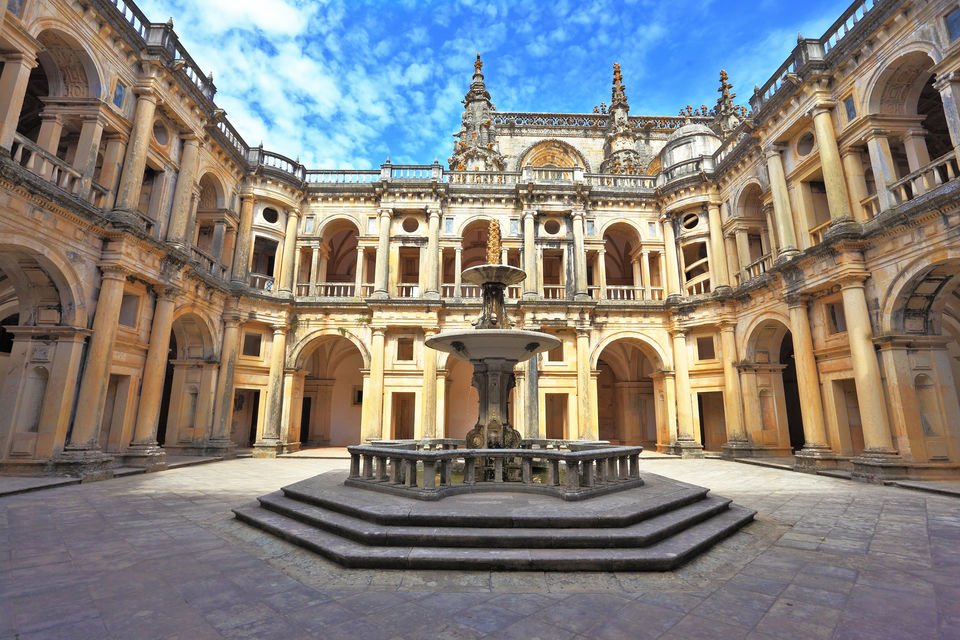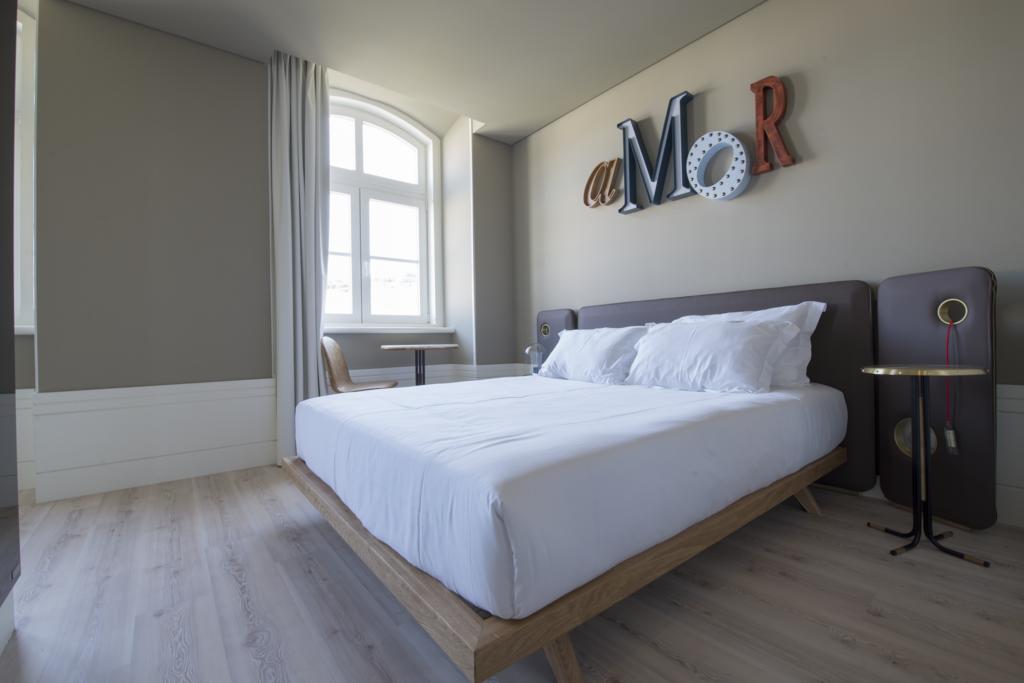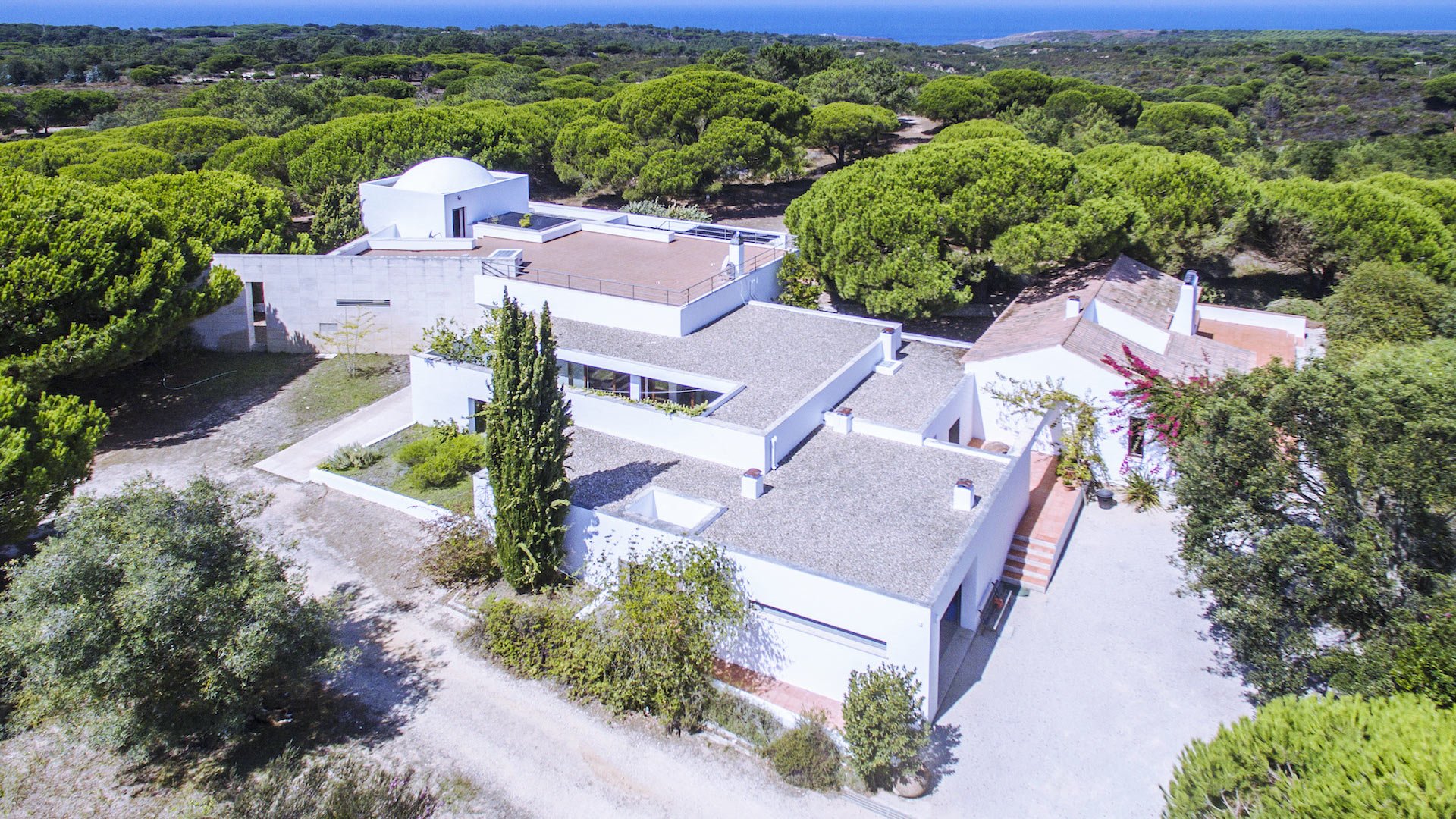The Alfama district in Lisbon
The Alfama is a historic and picturesque district of Lisbon, located on the hill overlooking the city. It is known for its narrow, winding streets, colourful granite houses, azulejos (decorative tiles) and wrought iron balconies. It is the oldest district in Lisbon, with origins dating back to the Middle Ages. It was largely spared by the 1755 earthquake, making it a great place to see the city’s traditional architecture.
The Alfama is also famous for its lively nightlife and traditional fado music. There are many bars and fado clubs in the area, offering lively nights with talented fado singers. The panoramic views of the city from the various miradouros are also one of the highlights of the Alfama. Finally, the Alfama is a great place to discover the local gastronomy. The Ribeira market offers a variety of fresh produce, while local restaurants serve traditional dishes such as grilled sardines and bacalhau à brás (cod).

Guided tour of the Alfama and Lisbon
If you want to discover Lisbon and the Alfama in a fun and relaxed way, the English speaking guided tours are for you! You will be able to wander through the narrow streets of the Alfama and discover the hidden corners of the city while learning fun facts about Lisbon’s history and culture.
I have selected for you 5 star English speaking tours but you can discover others to walk, bus, Segway, electric bike or tram and let yourself be guided through the main historical and cultural sites of the Alfama and Lisbon. You can also opt for thematic tours such as architecture, history, gastronomy, hidden secrets, fado, etc. These tours are an opportunity to discover the best views of the city, taste local cuisine, listen to live Fado music and have fun learning new things.
How to get to the Alfama district?
There are several ways to get to the Alfama district in Lisbon. One of the most common ways is to take the metro. The red line (linha vermelha) and the blue line (linha azul) have stops near Alfama, such as
- Martim Moniz stop: It is located at the northern edge of Alfama, it is connected to the red line.
- Santa Apolónia stop: It is located in the eastern part of the Alfama, it is connected to the blue line.
You can also take a tram, Tramway 28 is a very popular way to get to the Alfama district, it passes by many breathtaking views. It is also possible to get to the Alfama by bus, lines 714, 727, and 732 have stops in the area. If you prefer to walk, you can also explore the narrow streets of Alfama on foot. It is important to note that the area is very steep, so be prepared to climb some hills.
Visits and activities in the Alfama district ?
The Alfama is a historic and picturesque district of Lisbon, rich in monuments to visit. Here are some of the most important monuments not to be missed during your visit to this district.
São Jorges Castle

São Jorge Castle is a must-see when visiting Lisbon. It is located in the charming Alfama district, which is one of the oldest in the city. This medieval castle was built in the 11th century by the Moors and was then used by the Christians as a fortress for the following centuries. It offers a breathtaking view of the city and the Tagus River. When you visit the São Jorge Castle, you can see the ruins of the fortifications and buildings that have been preserved over the centuries.
You can also visit the castle’s gardens and admire the many species of plants that grow there. There is also a museum in the castle that traces the history of Lisbon. São Jorge Castle is a great place to immerse yourself in the history of Lisbon. It is open every day, and it is advisable to book your place online to avoid queues. It is possible to climb to the top of the ramparts and enjoy a 360 degree view of the city. It’s a great place for an afternoon of exploration and cultural discovery.
The cathedral of Sé

The Sé Cathedral is an architectural jewel located in the historic heart of Lisbon. This Gothic cathedral was built in the 12th century and is one of the oldest in the city. It is located in the Alfama district, a picturesque and charming part of Lisbon. The Sé Cathedral is a testimony to the history of Lisbon and its importance over the centuries. It was built on the site of a former mosque, a testimony to the Muslim presence in the area.
The cathedral has been damaged several times by earthquakes and fires, but has always been restored to maintain its architectural charm. It has a unique gothic architecture with pointed arches, stained glass windows and colourful azulejos. Sé Cathedral is an active place of worship and is open to visitors every day. It is also a venue for concerts and cultural events. It is possible to climb to the top of the tower to enjoy a breathtaking view of the city. Sé Cathedral is a must-see for lovers of architecture and history.
The Museum of Santo Antonio
The Museu de Santo Antonio is a museum dedicated to the figure of the patron saint of Lisbon, Saint Anthony. It is also located in the Alfama district, in the house where he was born. This museum is a place of worship and memory that traces the life of Saint Anthony and his impact on the city of Lisbon. The Museu de Santo Antonio is a cultural and spiritual place where you can discover the history of this saint. There is a room dedicated to his life and biography, as well as a room that traces the different celebrations of the feast of Saint Anthony, which is one of the most important events in the city.
The museum is also rich in religious objects related to the saint, such as relics, images and statues. The Museu de Santo Antonio is a unique place to discover the history and culture of Lisbon. It is open every day except Monday. It is accessible to everyone and is particularly interesting for lovers of religious history and cultural heritage. It is an active place of worship, so it is recommended to respect the appropriate rules of conduct. It is an ideal place for a family visit.
The Roman Amphitheatre

The Roman Amphitheatre of Lisbon is an archaeological site located in the Alfama district was discovered in 1869 and is one of the few examples of Roman architecture in the city. It was used for shows and gladiatorial fights. It is a testimony to the Roman presence in the area over 2000 years ago. The Roman Amphitheatre is a place of historical and cultural discovery. It is possible to visit the ruins of the amphitheatre and discover the different sections of this building such as the stands, the preparation rooms for the gladiators and the underground passages.
There is also an exhibition room that tells the story of the amphitheatre and life in Lisbon in Roman times. The Roman Amphitheatre is a unique place to discover the history and culture of Lisbon. It is open every day except Monday. It is accessible to all, but it is recommended to wear comfortable shoes to explore the ruins. It is a place of discovery for archaeology and history lovers, but also for all visitors curious to discover the traces of the Roman presence in the city of Lisbon.
The Fado Museum

The Fado Museum is a must for all lovers of this traditional Portuguese music. It is located in the Alfama district and is dedicated to the history and culture of Fado, a music that is intimately linked to the soul of Lisbon.
The Fado Museum is a place of cultural discovery where you can learn about the history of this music through the centuries. There are interactive exhibits where you can discover the different styles of Fado, the instruments used, the lyrics and the most famous composers. You can also listen to Fado recordings and watch video projections of the most outstanding Fado performances.
The Fado Museum is a place of discovery for all music and culture lovers. It is open every day except Monday. It is accessible to all and it is recommended to book your place online to avoid queues. It is an ideal place to discover the soul of Lisbon through its traditional music, and to soak up the atmosphere of the city by listening to Fado songs.
Tramway 28

Lisbon’s Tramway 28 is a must for all visitors to the city. It is known as one of the best ways to discover the historical areas of the city, especially the Alfama district. This historic tramway is a means of public transport in Lisbon that has been running for over 100 years.
Tramway 28 is a unique way to discover Lisbon. It crosses the narrow streets and steep slopes of the city, passing by historical monuments and picturesque neighbourhoods. It is considered a tourist attraction in its own right as it offers a breathtaking view of the city. It is particularly popular for its views of Lisbon’s azulejos, cobbled streets, churches and miradouros.
Tramway 28 is a convenient and fun way to discover Lisbon. It is easily accessible and runs every day. It is highly recommended to book your seat in advance to avoid queues.
The Panteão Nacional

The Panteão Nacional is an emblematic building of Lisbon, located in the Alfama district. It was built in the 18th century as a place of worship, and has become a place of national memory for the personalities who have marked the history of Portugal.
The Panteão Nacional is a unique architectural building, with a combination of baroque and rococo styles. It is decorated with frescoes, statues and azulejos that bear witness to the art and culture of Portugal. It is a place of remembrance for the personalities who have marked the history of Portugal, such as kings, poets and statesmen, all of whom are buried in the Panteão. It is open every day except Monday.
It is accessible to everyone and it is recommended to book your place online to avoid queues. It is an ideal place to discover the history and culture of Portugal, to admire its architecture and to pay tribute to the personalities who have marked the country’s history.
The architecture of the Alfama
The architecture of the Alfama is marked by its historical and traditional character. As one of Lisbon’s oldest neighbourhoods, it was largely spared from the 1755 earthquake that destroyed much of the city. This makes it a privileged place to discover the city’s traditional architecture. Granite houses are a characteristic feature of Alfama’s architecture. They can be seen in the narrow, winding streets of the district, often painted in bright colours to add life to the setting.
Azulejos (decorative tiles) are also a common feature of Alfama architecture, and can be seen on the facades of houses and public buildings. Wrought iron balconies are another typical architectural feature of the Alfama. They are often adorned with decorative motifs and are an ideal place to enjoy the panoramic views of the city. There are also churches and monasteries in the Alfama, such as Lisbon’s Sé Cathedral which is a Gothic building dating from the 13th century.
Finally, the Alfama is the ideal place to enjoy a panoramic view of Lisbon. The Castelo de São Jorge, a castle built in the 11th century, located at the top of the Alfama hill, offers a breathtaking panoramic view of the whole of Lisbon.
The Alfama district and Fado
Fado is a traditional Portuguese music that is intimately linked to the soul of Lisbon, and particularly to the Alfama district. This neighbourhood is considered to be one of the cradles of Fado, as it is where this music was born in the 19th century. Fado is a mixture of melancholy, nostalgia and feelings of everyday life, which reflects the soul of the city and its inhabitants.

The Alfama is a historic district of Lisbon, which has preserved its medieval architecture and narrow, steep streets. It is a neighbourhood where the inhabitants have always been very attached to their traditions and culture. The inhabitants of Alfama have always been fans of Fado and have contributed to its spread by singing it in taverns and bars. Fado has become a symbol of the soul of Alfama and Lisbon.
Fado is today a cultural symbol of Lisbon and has become a UNESCO cultural heritage. The Alfama district is the ideal place to discover Fado, as it is here that you can attend live performances in traditional taverns and bars. There are also museums dedicated to Fado in the area such as the Fado Museum, where you can learn about the history and culture of this music. Here is a list of 4 bars or restaurants where tourists can listen to Fado in the Alfama district:
- Adega Machado – This historic bar is one of the oldest in Lisbon and is known for its live Fado evenings, with local artists and experienced musicians. It is also famous for its authentic atmosphere and traditional Portuguese cuisine.
- Tasca do Chico – This bar is a must for listening to Fado in the Alfama district. It is known for its warm atmosphere and traditional cuisine, accompanied by local drinks and live music.
- Clube de Fado – This club is dedicated to Fado music, offering live Fado evenings with local artists and experienced musicians. It is also possible to dine in and enjoy a traditional meal with Fado music.
- Casa de Linhares – This restaurant is located in a historic house in the Alfama and offers a charming atmosphere and traditional Portuguese cuisine with live Fado music.
The miradouros of the Alfama
A miradouro is a panoramic viewpoint in Lisbon. It is usually a terrace or platform on high ground from which you can enjoy a panoramic view of the city. Miradouros are often located on hills or rooftops and offer an unobstructed view of the city’s monuments, streets and rooftops.
They are often decorated with gardens, statues and benches to allow visitors to relax and enjoy the view. Miradouros are a popular place for tourists and locals alike and are often used for cultural events and parties in the summer.

Miradouro of Santa Luzia
This miradouro is one of the most famous in the Alfama, offering a breathtaking view of the city, the Tagus and the Castelo de São Jorge. It is decorated with Moorish-style gardens, mosaics and statues. It is a place for locals and visitors to relax, have a drink and enjoy the view and listen to live music. It is particularly popular for its peaceful atmosphere and sunset views.
Miradouro da Graça
Located at the top of Graça hill, this miradouro offers a breathtaking view of the whole city of Lisbon. It is a meeting place for locals and visitors alike, with café terraces and bars to enjoy the view. It is known for its panoramic view of the whole city, the Tagus and the Castelo de São Jorge. It is also a place to relax and listen to live music, particularly popular for its Fado nights.
Miradouro Portas do Sol
The Miradouro Portas do Sol is one of the most famous miradouros in the Alfama, offering a breathtaking view of the city, the Tagus River and the rooftops of the old town. It is located in the narrow streets of the Alfama, is accessible by steps and is renowned for being one of the most peaceful miradouros in the city. It is particularly popular for its panoramic view of the whole city, the Tagus and the Castelo de São Jorge. It is also a relaxing place to listen to live music, particularly popular for its Fado nights. It is a favourite place for lovers of Lisbon city views, for amateur or professional photographers, or for those who want to enjoy a quiet moment in a peaceful place.
Where to eat in the Alfama district
The gastronomy of the Alfama is a must-see culinary experience for visitors to Lisbon. The area is famous for its traditional taverns and restaurants that serve authentic local cuisine, rich in flavours and fresh ingredients. Traditional dishes from the area are often based on fresh fish and seafood, accompanied by rice and vegetables. Typical restaurants in the Alfama offer traditional Portuguese cuisine using fresh local produce and the typical flavours of the region.
You can enjoy fresh fish and seafood dishes such as grilled sardines, bacalhau à brás, or fish ceviche. You can also try traditional meat dishes such as roast suckling pig with rice and vegetables, or the famous petiscos (Portuguese tapas) such as cod croquettes, tripe à moda do Porto, and pasteis de bacalhau. Restaurants also offer vegetarian and vegan dishes.

Here is a list of 5 typical restaurants in Alfama:
- Restaurante Solar dos Presuntos
- Tasca da Esquina
- O Fado
- Casa de Linhares
- Adega Machado
Alfama: best hotels
The Alfama district is the oldest district in Lisbon and also one of the liveliest in the city, with many bars, restaurants and entertainment venues. It is therefore a favourite place for tourists looking to stay in a lively and historic area. It offers a variety of accommodation ranging from high-end hotels to bed and breakfasts to holiday flats for rent.
Here is a list of 5 of the best known hotels in the Alfama district:
- Hotel Santa Luzia
- The Independente Hostel & Suites
- Casa do Conto
- Hotel Casa de São Mamede
- Casa das Janelas com Vista de Lisboa
All of these hotels are located in the Alfama district, offering comfortable rooms and great views of the city, ideal for travellers looking for accommodation that is central and close to Lisbon’s main tourist attractions.
The craft shops of the Alfama
The Alfama district of Lisbon is known for its artisanal shops offering unique and traditional products. These shops offer a wide range of handmade products, such as pottery, mosaics, textiles, jewellery, wooden objects, leather goods and wicker baskets. These shops also offer local products such as azulejos (ceramic tiles), ceramics, fabrics, lace, and silver crafts.
The craft shops in the Alfama are a favourite place for art and culture lovers, for those looking for original souvenirs, or for those looking for unique gifts for their loved ones. Local artisans offer their skills, creativity, passion and history. The craft shops also offer the opportunity to acquire unique objects, often handmade, that reflect the culture and traditions of the region.
Related Articles
- Visit Lisbon by bus
Visiting Lisbon by bus is probably one of the favourite activities of tourists in…
- Discover Fado in Lisbon
Fado in Lisbon: 5-star discovery Before immersing yourself in the history of Fado and…
- Transfer Lisbon Airport and Silver Coast
The whole part of the Silver Coast in Portugal is increasingly visited by tourists who…









